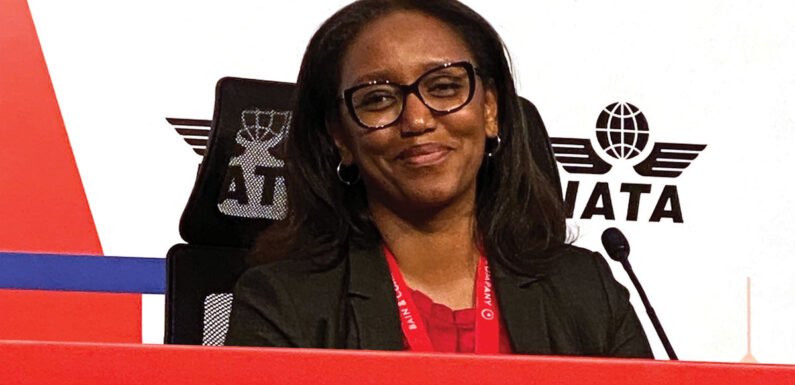
ISTANBUL — Airlines and other companies in the commercial aviation industry that signed IATA’s 25by2025 initiative to grow the representation of women in senior leadership are making progress toward gender equity.
However, leaders of the traditionally male-dominated industry said at IATA’s Annual General Meeting here in June that those strides aren’t big enough and that not enough IATA airline members have taken the pledge.
Currently, 191 aviation industry companies have signed onto 25by2025, mostly airlines. But only slightly more than half of IATA airline members have made the commitment. Signatories of 25by2025 have pledged that by 2025 they will either increase their proportion of women in senior positions to 25% or achieve a 25% increase in that metric.
IATA created the initiative in 2019, one year after the organization came under fire for having just one woman on its 26-member board of directors.
Yvonne Makolo, the CEO of RwandAir, became the board of governors’ first female chairwoman during the meeting in Turkey, a position she’ll hold for a year.
According to numbers put forward by IATA at the general meeting, 28% of the senior leadership roles among participants in the 25by2025 initiative were held by women, up from 24% in 2021. The figures were derived from the 147 initiative participants that chose to submit data, including 129 airlines, so they could skew higher than overall industry numbers.
Twenty-eight airlines now have a female CEO, up 20% from 2021, according to IATA. Among the newer ones are Annette Mann, who became CEO of Austrian Airlines in March 2022; Marjan Rintel, who began as CEO of KLM last July; and Dorothea von Boxberg, appointed CEO of Brussels Airlines this spring. Vanessa Hudson will become the Qantas CEO in November.
Over the course of the conference, industry leaders agreed that it will take committed leadership to more quickly improve the airline industry’s gender imbalance.
“As long as we have leaders who don’t have the foresight about the benefits of having both women and men working together to achieve the results of an organization — understanding that one doesn’t have to compete with the other and that both men and women have a lot to offer — I think we’re doomed,” said Poppy Khoza, CEO of the South African Civil Aviation Authority. “We need leaders who take bold steps.”
Khoza said that she is loath to talk about statistics, since women want and deserve to be hired on their merits. Still, she noted that women comprise 51% of the employees at her organization.
“It’s not that the talent is not there. It is there,” she said. “We just don’t want to go and look for it. To me, not to transform is a decision that you’ve taken already.”
‘Really nothing to stop us’
Among the large commercial U.S. airlines that are IATA members, American, Delta, United, Hawaiian and JetBlue are 25by2025 signatories while Alaska is not. None of the 10 primary U.S. airlines have a female CEO.
Speaking during a panel at the general meeting, JetBlue CEO Robin Hayes exhorted more of IATA’s 300-plus member airlines to join the initiative.
“The fact that half of IATA members have not signed up for 25by2025: Come on, guys,” he said. “There’s nothing really to stop us doing that.”
Hayes said that he counts six women among the executives who report directly to him.
“It’s an incredibly diverse team, and it just works better, and they deliver better results, and they have a better understanding and appreciation of different perspectives in the business,” he said.
The 25by2025 commitment also applies to nonexecutive roles in which women are underrepresented, such as pilots. More than 1,000 women began flying at signatory airlines last year, but women still comprise a paltry 5% of flying posts at those carriers.
Hayes said that targeted initiatives have helped JetBlue achieve up to 18% female representation in some of its pilot-training pathways. That’s progress, he said, but not nearly enough of it.
RwandAir’s Makolo expressed a similar sentiment for the broader question of the gender gap across airlines.
“Things are being done, especially with IATA 25by2025, to address that issue. But it has to move faster,” she said. “And it has to be deliberate by individual airlines to address this problem. It’s not a woman problem. It’s not for women to fix it. It’s for all of us to fix it.”
Source: Read Full Article









